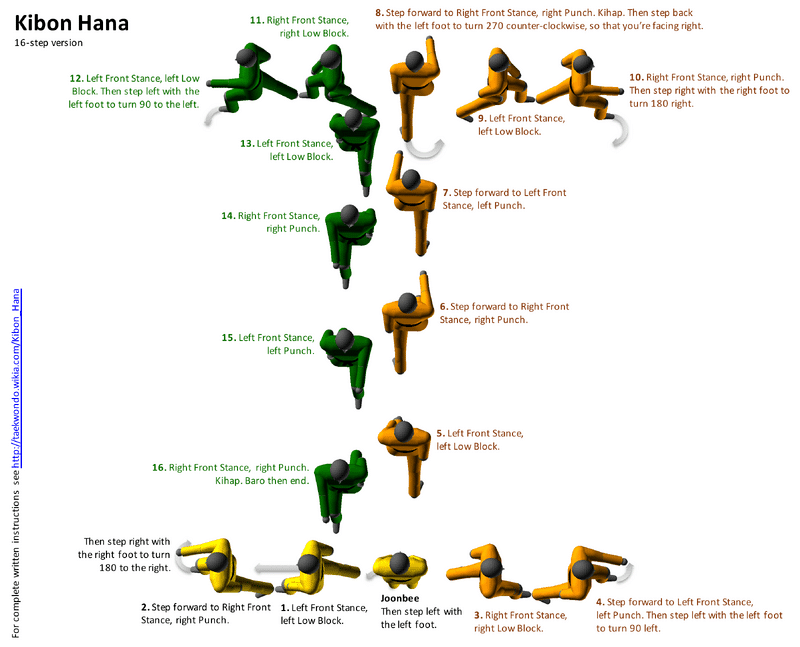I'm still practicing Kibon Hana, but I'm wondering how many forms there are in the kibon set?
What are kicho forms?
And I guess on a personal one, do you practice (and or teach) the Palgwe set?
I guess what I really mean to ask is, how many total forms are there in both kukkiwon and Chang hon styles?
I'm not in a rush to fly through the ranks, I think it's good to fully master forms, they serve a multitude of purposes.
They, to my limited knowledge (I'm a former karateka), they are a catalogue of basic technique, and can be used as a memory test, I don't believe in hidden application, but there are somethings I still probably don't understand, and... Well, the longer it takes to master, the longer you have to stretch, workout, and spar.
I'm not that good though, I still get confused on a certain step.
Anyway, i just thought I'd ask, I find taekwondo forms interesting.
What are kicho forms?
And I guess on a personal one, do you practice (and or teach) the Palgwe set?
I guess what I really mean to ask is, how many total forms are there in both kukkiwon and Chang hon styles?
I'm not in a rush to fly through the ranks, I think it's good to fully master forms, they serve a multitude of purposes.
They, to my limited knowledge (I'm a former karateka), they are a catalogue of basic technique, and can be used as a memory test, I don't believe in hidden application, but there are somethings I still probably don't understand, and... Well, the longer it takes to master, the longer you have to stretch, workout, and spar.
I'm not that good though, I still get confused on a certain step.
Anyway, i just thought I'd ask, I find taekwondo forms interesting.

